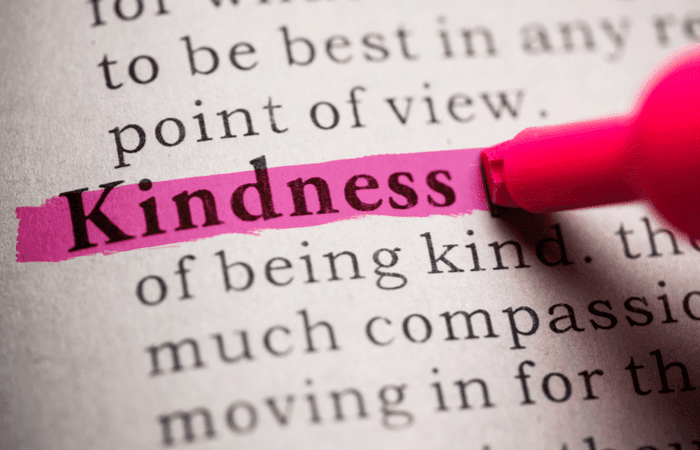Treating Others with Kindness in the Workplace

How do you understand ‘Kindness’ and what does it speak to you of? For me, kindness speaks of courtesy and of a friendly, generous, compassionate nature. While some people are just naturally kind and warm-hearted, others choose kindness out of consideration and service to others. This suggests kindness is a personal trait but also a behaviour that can be learned or encouraged, in life and in the workplace.
Trust and respect in the workplace
As adults, we spend about one-third of our lives at work. Today’s workplace is not for the fainthearted. It is filled with different personalities, expectations, and roles, a mix that will inevitably lead to conflict. While some disagreement is inevitable, for healthy levels of employee engagement and productivity, staff require a workplace that is physically and mentally comfortable. For an increasing number this is not the case. Issues of interpersonal struggles, gossip, bullying, harassment, and discrimination make their workplace a dread-filled environment. Related research links the resultant workplace stress with higher levels of mental health issues such as anxiety and depression. This translates into low staff motivation, poor job satisfaction, and lower job performance. A lack of trust and respect in the workplace is something that HR cannot rectify easily.
Workplace kindness: an antidote, a culture and happiness
Treating people with kindness can be an antidote to toxic workplaces, and a catalyst for positive change. Building such a culture of kindness at work requires colleagues to trust one another. This is not an easy request to make of some, especially if they feel vulnerable or have been mistreated in the past. There is, however, a payoff to such an appeal. Kind actions will build a friendlier, more compassionate workplace. Behaviours which discriminate or intimidate are then more easily recognised, named and tackled. When kindness and kind actions become expectations the green shoots of a healthier culture start to appear. Empathy and compassion in the workplace become the norm. And a happy workplace is a more productive workplace. This is a win-win work scenario as happier people build a happy workplace – with happier customers.
Kindness in action
What might kindness look like in action in the workplace? It can be as simple as saying thank you to a colleague for a job well done or giving a helping hand with a task. Kindness remembers a birthday and sends a card (maybe cake!) Kindness celebrates special occasions; passing professional exams, the birth of a child, or a colleague’s wedding. Kindness understands when a colleague feels overwhelmed and when a team is demotivated by a project. A kind leader will listen to their concerns, help put things into perspective and offer support. Kindness appreciates and considers personal circumstances and includes everybody in the organisation.

Building a culture of kindness
It isn’t too difficult to begin to build on the inherent kindness of the majority of staff. In action, it helps distant staff to become closer colleagues, then friends, which helps to build a more resilient and more compassionate workforce. In addition, kindness looks for the opportunity to celebrate others first – one of the skills of a good leader. Hence, kindness not only builds solid business foundations but allows you to identify new leadership. With a good template as a guide and some ongoing professional development, everyone can learn to ‘exercise’ their kindness muscles. The flip side of kindness is gratitude. As staff reflect on the kindnesses received they see the benefits of gratitude in the workplace. They begin to associate kindness and gratitude with their job, which strengthens bonds between employees and employer. Everybody wins in a kind, happy, grateful workplace!
What is your culture of kindness at work?
Is kindness a useful concept to challenge toxic workplace culture? Can it help to build a more compassionate, grateful workplace? Have you enabled a kinder, more inclusive workplace? Is happiness at the workplace something to aim for? What were your initiatives? We’d love to hear your stories.
About the Author
Paul Gadie has a doctorate in Theology and is the Managing Director of Gift Innovations
Image reference: MOME www.mome.ie
